
Canadian Journal of Applied Linguistics
Scope & Guideline
Empowering Educators with Cutting-Edge Linguistic Research
Introduction
Aims and Scopes
- Language Learning and Teaching Methodologies:
The journal explores diverse methodologies and pedagogical approaches in language learning, emphasizing task-based language teaching, collaborative writing, and the integration of technology in language instruction. - Sociolinguistic Perspectives:
Research published in the journal often addresses sociolinguistic factors influencing language learning and teaching, including identity, investment, and the experiences of marginalized groups such as refugee-background students. - Assessment and Evaluation:
The journal contributes to the field by examining language assessment practices, including diagnostic assessments, formative feedback, and the implications of language proficiency standards like the CEFR. - Multilingualism and Plurilingual Pedagogy:
A significant focus is placed on multilingual education, exploring the dynamics of bilingualism and multilingualism in classrooms, and how these affect language acquisition and literacy. - Individual Differences in Language Learning:
The journal investigates individual learner differences, including cognitive and affective factors, which impact language learning outcomes, drawing on complex systems theory to understand these variations.
Trending and Emerging
- Equity and Inclusion in Language Education:
Research on equity and inclusion, particularly regarding at-risk and refugee-background students, has gained significant attention, highlighting the need for educational practices that accommodate diverse learner needs. - Technology Integration in Language Learning:
The integration of technology into language instruction, including digital tools and online platforms, is increasingly prominent, reflecting the shift towards blended and remote learning environments. - Complex Systems Theory in Language Learning:
An emergent focus on complex systems theory offers new insights into individual differences and dynamic interactions in language learning, fostering a deeper understanding of learner variability. - Translanguaging and Multiliteracies:
The concepts of translanguaging and multiliteracies are becoming central to discussions in the journal, emphasizing the fluid use of multiple languages and literacies in educational contexts. - Critical Discourse Analysis in Language Education:
There is a growing trend towards employing critical discourse analysis to examine language policies and practices, particularly regarding immigrant learners and the sociopolitical dimensions of language education.
Declining or Waning
- Traditional Language Teaching Methods:
There is a noticeable decrease in research focusing on traditional, teacher-centered language teaching methods, as the field increasingly favors more interactive and learner-centered approaches. - Single Language Instruction:
Research centered exclusively on single language instruction is becoming less common, as the journal increasingly emphasizes multilingual and plurilingual contexts, reflecting the diverse linguistic realities in education. - Standardized Testing Approaches:
With a growing emphasis on formative and alternative assessment methods, traditional standardized testing approaches are receiving less attention in recent publications. - Linguistic Features in Isolation:
There is a declining focus on isolated studies of linguistic features without connection to broader pedagogical implications, as the journal seeks to align research with practical teaching applications.
Similar Journals
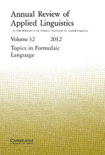
Annual Review of Applied Linguistics
Connecting researchers and practitioners in the world of applied linguistics.The Annual Review of Applied Linguistics, published by Cambridge University Press, stands as a premier journal in the realm of linguistics and psychology, with an impressive impact factor identifying its significance: ranking in the Q1 quartile across both fields in 2023. With an ISSN of 0267-1905 and an E-ISSN of 1471-6356, this journal endeavors to provide comprehensive and insightful reviews covering an array of topics within applied linguistics, thus supporting researchers, professionals, and students in advancing their understanding and expertise. Operating from its base in Cambridge, United Kingdom, the journal has maintained a consistent commitment to scholarly excellence since its inception, accelerating discussions on critical issues and emerging research trends from 2005 to 2024. Notably, it holds a prestigious position in Scopus, ranked #26 in Language and Linguistics and #30 in Social Sciences, showcasing its influence and contribution to the scholarship in the field. The Annual Review of Applied Linguistics thus stands as an essential resource for anyone engaged in linguistic research and application.
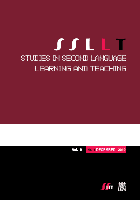
Studies in Second Language Learning and Teaching
Bridging theory and practice in language education.Studies in Second Language Learning and Teaching is a premier open-access journal dedicated to advancing research and scholarship in the fields of education, linguistics, and language acquisition. Published by ADAM MICKIEWICZ UNIVERSITY, KALISZ, this journal has consistently achieved high acclaim, reflected in its impressive Q1 rankings in both Education and Linguistics and Language categories for 2023. With a robust focus on innovative methods, effective pedagogical strategies, and interdisciplinary approaches, Studies in Second Language Learning and Teaching aims to facilitate dialogue among researchers, educators, and practitioners, fostering a deeper understanding of language learning and teaching in diverse contexts. Since its transition to open access in 2011, the journal has expanded its reach, providing valuable resources and research findings to a global audience. With an exceptional Scopus ranking placing it in the top percentiles across multiple categories, this journal stands as a crucial platform for the dissemination of ground-breaking research in second language education.

RLA-Revista de Linguistica Teorica y Aplicada
Cultivating interdisciplinary insights in the study of language.RLA-Revista de Linguística Teórica y Aplicada, published by Universidad de Concepción, Facultad de Humanidades y Arte, stands as a vital resource in the field of linguistics, delivering cutting-edge research and scholarly articles that contribute to both theoretical and applied linguistics. With its ISSN 0718-4883, this journal aims to foster robust discussions and innovations in linguistic theory, language acquisition, sociolinguistics, and applied linguistics methodologies. Although the journal currently does not provide open access options, it endeavors to reach a diverse audience, including researchers, professionals, and students, who are keen to explore the rich tapestry of language studies. By offering insights from both local and global perspectives, RLA does not only advance linguistic discourse but also encourages interdisciplinary collaboration, thereby solidifying its role as a pivotal publication in the linguistic academic community.
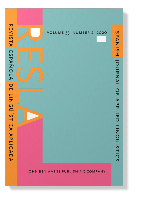
Revista Espanola de Linguistica Aplicada
Fostering interdisciplinary dialogue in language education.Revista Espanola de Linguistica Aplicada is a prominent academic journal published by John Benjamins Publishing Co, specializing in the interdisciplinary fields of linguistics, education, and e-learning. With its ISSN 0213-2028 and E-ISSN 2254-6774, the journal has established a significant presence in Spain and beyond, showcasing innovative research and contributions in applied linguistics. The journal is recognized for its rigorous peer-review process and maintains impressive Scopus rankings, notably within the 72nd percentile for Arts and Humanities and 68th percentile for Social Sciences, reflecting its critical role in advancing the study of language and education. As of 2023, it holds a Q3 rank in Education and a Q2 rank in Linguistics and Language, underscoring its influence and relevance in these disciplines. Targeted at researchers, educators, and students alike, the journal aims to facilitate knowledge exchange and provide a platform for discussions that shape the future of linguistics.
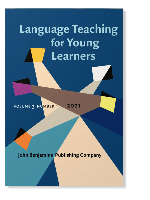
Language Teaching for Young Learners
Transforming language education for the next generation.Language Teaching for Young Learners, published by John Benjamins Publishing Co, is a premier journal dedicated to enhancing the pedagogy of language acquisition in early childhood education. Since its inception in 2019, it has rapidly established itself within the research community, reflected by its high Scopus rankings—placing it in the 85th percentile for Language and Linguistics and the 84th percentile for Education. The journal aims to provide a platform for innovative research, practical insights, and theoretical discussions surrounding the teaching of languages to young learners, thus contributing significantly to the fields of Education and Linguistics. With an open access model currently unavailable, it caters to a diverse global audience, including researchers, educators, and policy-makers, keen on improving pedagogical practices. Located in the Netherlands, the journal's commitment to academic excellence is evident through its Q1 and Q2 rankings in Linguistics and Language and Education respectively, encouraging continual discourse in cultivating effective language education practices.
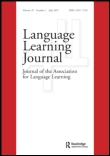
Language Learning Journal
Fostering global dialogue in language learning advancements.Welcome to the Language Learning Journal, a premier resource for researchers, educators, and linguists alike, published by Routledge Journals, Taylor & Francis Ltd. With a proud history dating back to 1990 and commitment to advancing the exploration of language acquisition, this esteemed journal boasts an impressive impact factor within Q1 rankings across both the Education and Linguistics and Language categories. Ranked #40 in Language and Linguistics and achieving a 96th percentile in the Arts and Humanities, the journal serves as a crucial platform for disseminating cutting-edge research, innovative methodologies, and impactful discussions in the field of language learning. Although currently not offered as an open access publication, the depth and quality of content ensure significant contributions to the body of knowledge for professionals and scholars. With its global reach, the Language Learning Journal is dedicated to fostering the development and understanding of language learning processes, enabling readers to stay informed about the latest trends and findings through rigorous peer-reviewed articles.

Colombian Applied Linguistics Journal
Bridging theory and practice in applied linguistics.Colombian Applied Linguistics Journal, published by UNIV DISTRITAL FRANCISCO JOSE DE CALDAS, serves as a vital platform for the advancement of knowledge in the field of applied linguistics, particularly within the Latin American context. Since its inception in 2003, the journal has embraced an Open Access model, ensuring that cutting-edge research is readily accessible to scholars, practitioners, and students alike. With a focus on topics including language acquisition, language policy, and bilingual education, the journal contributes to the understanding of linguistic diversity and its practical applications in educational settings. The Colombian Applied Linguistics Journal is dedicated to fostering dialogue and disseminating research that bridges theory and practice, thus playing a crucial role in shaping contemporary discourses in linguistics and education. Located in Bogotá, Colombia, the journal encourages submissions from both national and international authors, enhancing its reputation as a key player in the global linguistic community.

RAEL-Revista Electronica de Linguistica Aplicada
Unveiling Language's Practical PotentialRAEL-Revista Electronica de Linguistica Aplicada, published by the ASOC ESPANOLA LINGUISTICA APLICADA-AESLA, is a prominent open access journal that has been serving the field of applied linguistics since its inception in 2002. With a dedicated focus on the interplay between language and its practical applications in various contexts, the journal aims to disseminate high-quality research and foster academic discourse among linguists, educators, and policy makers alike. Based in Spain at the Universidad Politécnica de Valencia, RAEL is indexed in Scopus and offers access to a global readership. With a current impact factor reflecting its esteem in the fields of Education, Linguistics, and Social Sciences, the journal ranks in Q3 for linguistics and has achieved significant positioning within its categories. Researchers and students seeking to explore applied linguistic phenomena will find valuable insights and diverse perspectives in its published articles, making RAEL a vital resource in the pursuit of knowledge advancement in this dynamic discipline.
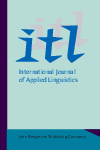
ITL-International Journal of Applied Linguistics
Pioneering insights for educators and linguists alike.ITL-International Journal of Applied Linguistics, published by JOHN BENJAMINS PUBLISHING CO in Belgium, stands as a leading journal in the field of applied linguistics and education, recognized for its rigorous scholarship and impactful contributions. With an impressive ranking of Q1 in both the Education and Linguistics and Language categories, ITL holds its place among the top journals globally, featuring in the Scopus rankings with a notable 91st percentile in both Arts and Humanities as well as Social Sciences. The journal aims to disseminate innovative research exploring the intersection of linguistics, language acquisition, and pedagogical practices, fostering a rich academic dialogue among researchers, educators, and practitioners. Though not currently an open access journal, ITL remains accessible to a broad readership, with an emphasis on high-quality, peer-reviewed articles that inform and inspire advancements in applied linguistics. The journal's commitment to academic excellence and relevance makes it an essential resource for those seeking to understand and contribute to the dynamic landscape of language studies.
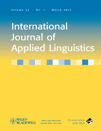
International Journal of Applied Linguistics
Championing Excellence in Applied Linguistics ResearchInternational Journal of Applied Linguistics, published by WILEY, is a premier platform for cutting-edge research in the field of applied linguistics. With a notable Impact Factor and ranked in the top Q1 quartile of linguistics and language, this journal serves as an essential resource for scholars, practitioners, and students. The journal’s wide-ranging scope includes various subfields such as language acquisition, language education, sociolinguistics, and discourse analysis, fostering multidisciplinary approaches to language studies. It has achieved a significant Scopus Rank, placing it in the 90th percentile for both Arts and Humanities as well as Social Sciences categories, reflecting its high visibility and influence in the academic community. The International Journal of Applied Linguistics is committed to advancing the understanding of language use in real-world contexts through rigorously peer-reviewed articles that contribute to both theory and practical applications. While it is not an open-access journal, it remains a highly respected publication for researchers looking to disseminate and acquire knowledge in applied linguistics.